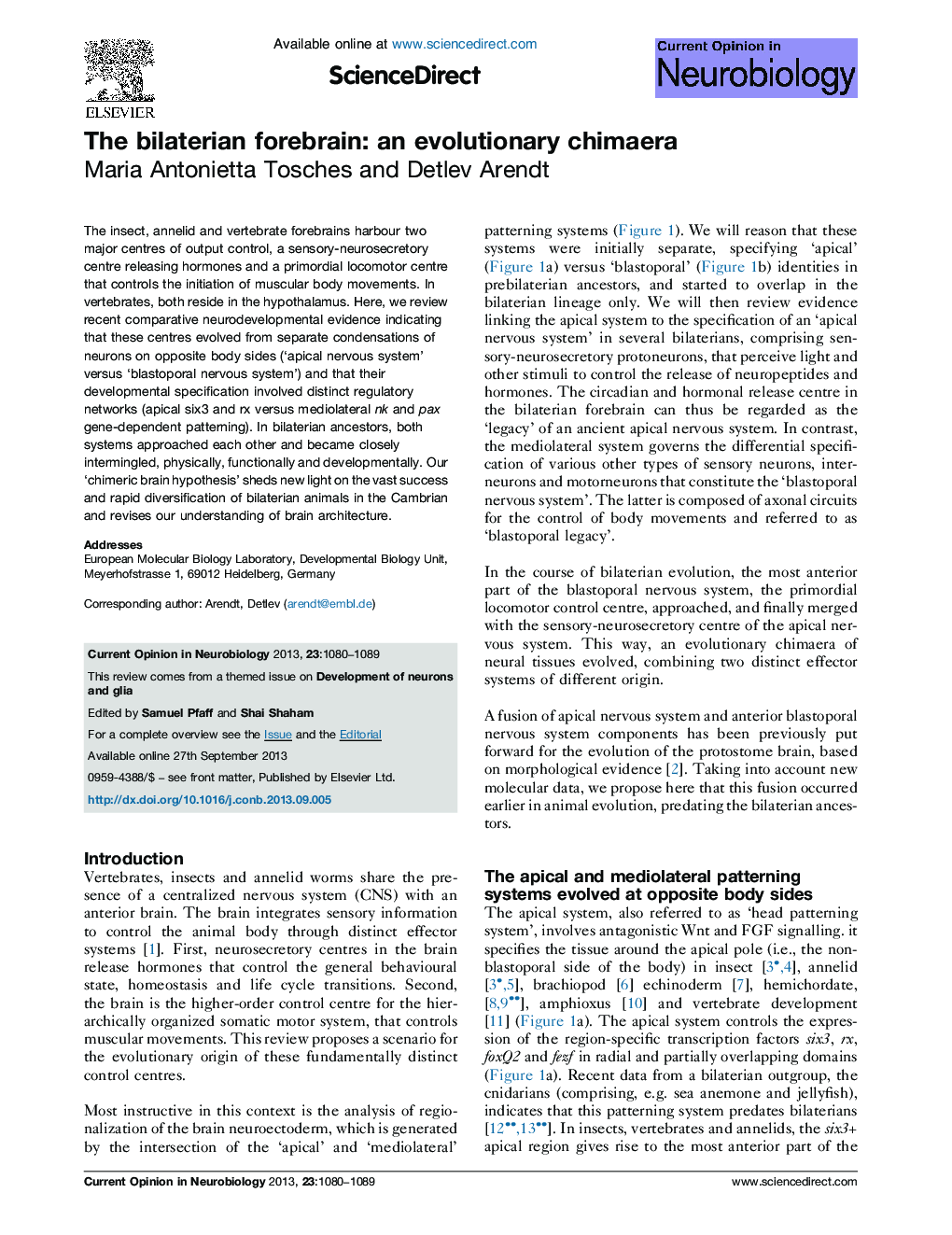| کد مقاله | کد نشریه | سال انتشار | مقاله انگلیسی | نسخه تمام متن |
|---|---|---|---|---|
| 6266777 | 1294918 | 2013 | 10 صفحه PDF | دانلود رایگان |
- The two signalling systems that pattern the bilaterian forebrain evolved on opposite body sides.
- These systems initially specified two spatially separate condensations of neurons.
- Sensory-neurosecretory protoneurons represent legacy of the 'apical nervous system'.
- The 'blastoporal nervous system' is a contractile-motor system based on axonal connections.
- The bilaterian forebrain represents a fusion of apical and blastoporal nervous systems.
The insect, annelid and vertebrate forebrains harbour two major centres of output control, a sensory-neurosecretory centre releasing hormones and a primordial locomotor centre that controls the initiation of muscular body movements. In vertebrates, both reside in the hypothalamus. Here, we review recent comparative neurodevelopmental evidence indicating that these centres evolved from separate condensations of neurons on opposite body sides ('apical nervous system' versus 'blastoporal nervous system') and that their developmental specification involved distinct regulatory networks (apical six3 and rx versus mediolateral nk and pax gene-dependent patterning). In bilaterian ancestors, both systems approached each other and became closely intermingled, physically, functionally and developmentally. Our 'chimeric brain hypothesis' sheds new light on the vast success and rapid diversification of bilaterian animals in the Cambrian and revises our understanding of brain architecture.
Journal: Current Opinion in Neurobiology - Volume 23, Issue 6, December 2013, Pages 1080-1089
